
NGC 5034 is a spiral galaxy in the constellation of Ursa Minor. NGC 5034 is its New General Catalogue designation. It is located about 401 million light-years from the Sun. It was discovered on April 7, 1793, by William Herschel.

NGC 3258 is an elliptical galaxy in the constellation Antlia. It is a member of the Antlia Cluster, which lies about 40.7 megaparsecs away. It was discovered on May 2, 1834 by John Herschel.

NGC 3260 is an elliptical galaxy in the constellation Antlia. It is a member of the Antlia Cluster, which lies about 40.7 megaparsecs away. It was discovered on May 2, 1834 by the astronomer John Herschel.

NGC 119 is an unbarred lenticular galaxy with an apparent magnitude of 13.0 located in the constellation Phoenix. It was discovered on October 28, 1834, by the astronomer John Herschel.

NGC 7199 is a barred spiral galaxy registered in the New General Catalogue. It is located in the direction of the Indus constellation. It was discovered by the English astronomer John Herschel in 1835 using a 47.5 cm reflector.
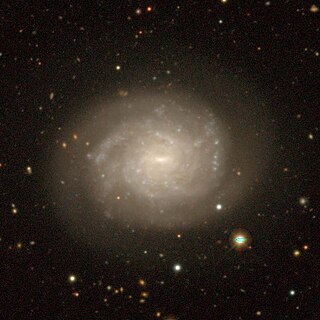
NGC 1310 is a barred spiral galaxy located in the southern constellation of Fornax. It was discovered by English astronomer John Herschel on 22 October 1835.

NGC 3001 is a magnitude 11.83 spiral galaxy in the constellation Antlia, discovered on 30 March 1835 by John Herschel. It has a recessional velocity of 2,465 kilometres (1,532 mi) per second, and is located around 115 million light years away. NGC 3001 has an apparent size of 4.3 by 3.1 arcminutes and is about 145 thousand light years across.

NGC 999 is an intermediate spiral galaxy located in the constellation Andromeda about 195 million light-years from the Milky Way. It was discovered by French astronomer Edouard Stephan on 8 December 1871.

NGC 995 is a lenticular galaxy located in the constellation Andromeda about 178 million light years from the Milky Way. It was discovered by the French astronomer Édouard Stephan on 8 December 1871.

NGC 820 is a spiral galaxy located in the constellation Aries about 210 million light-years from the Milky Way. It was discovered by British astronomer John Herschel in 1828.

NGC 830 is a barred lenticular galaxy in the constellation Cetus. It is estimated to be about 170 million light-years from the Milky Way and has a diameter of approximately 70,000 light years.

NGC 900 is a lenticular galaxy located in the constellation Aries about 430 million light-years from the Milky Way. It was discovered by the German astronomer Albert Marth in 1864.
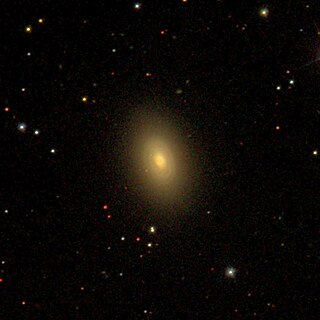
NGC 940 is a lenticular galaxy in the constellation Triangulum. It is estimated to be 222 million light-years from the Milky Way and has a diameter of approximately 80,000 ly. NGC 940 was discovered by Heinrich d'Arrest.

NGC 938 is an elliptical galaxy located in the constellation Aries, approximately 184 million light years from the Milky Way. It was discovered by the Prussian astronomer Heinrich d'Arrest in 1863.
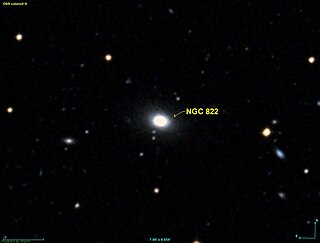
NGC 822 is an elliptical galaxy in the constellation Phoenix. It is estimated to be about 233 million light-years from the Milky Way and has a diameter of approximately 80,000 light-years. NGC 822 was discovered on September 5, 1834, by astronomer John Herschel.
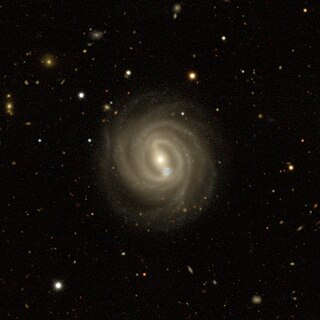
NGC 824 is a barred spiral galaxy located in the constellation Fornax about 260 million light-years from the Milky Way. It was discovered by British astronomer John Herschel in 1837.

NGC 2803, also known as PCG 26181, is an elliptical or lenticular galaxy in the zodiac constellation Cancer. It was discovered March 21, 1784, by William Herschel. It is interacting with NGC 2802.
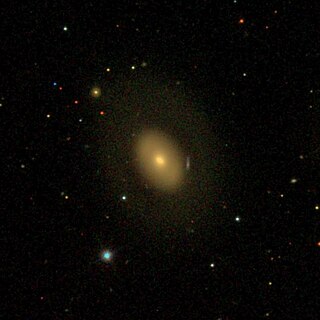
NGC 608 is a lenticular galaxy in the constellation Triangulum. It is estimated to be about 230 million light-years from the Milky Way. It has a diameter of approximately 130,000 light-years. NGC 608 was discovered on November 22, 1827, by astronomer John Herschel.

NGC 862 is an elliptical galaxy located in the constellation of Phoenix about 241 million light years from the Milky Way. It was discovered by the British astronomer John Herschel in 1834.
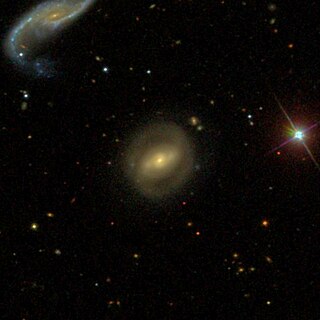
NGC 4614 is a barred lenticular galaxy in the New General Catalog. It is located in the constellation of Coma Berenices. It was discovered in 1864 by the German astronomer Heinrich d'Arrest with a 11.9 inch diameter lens type telescope.





















